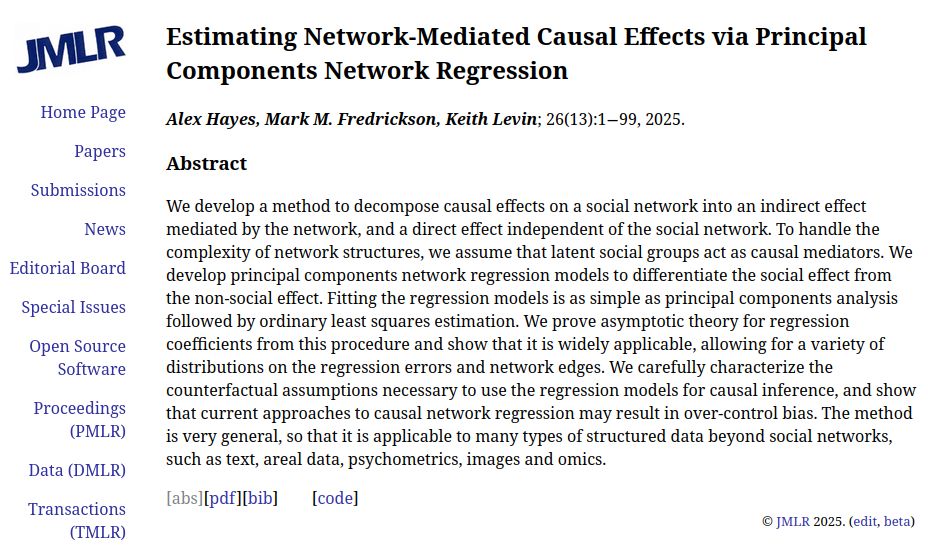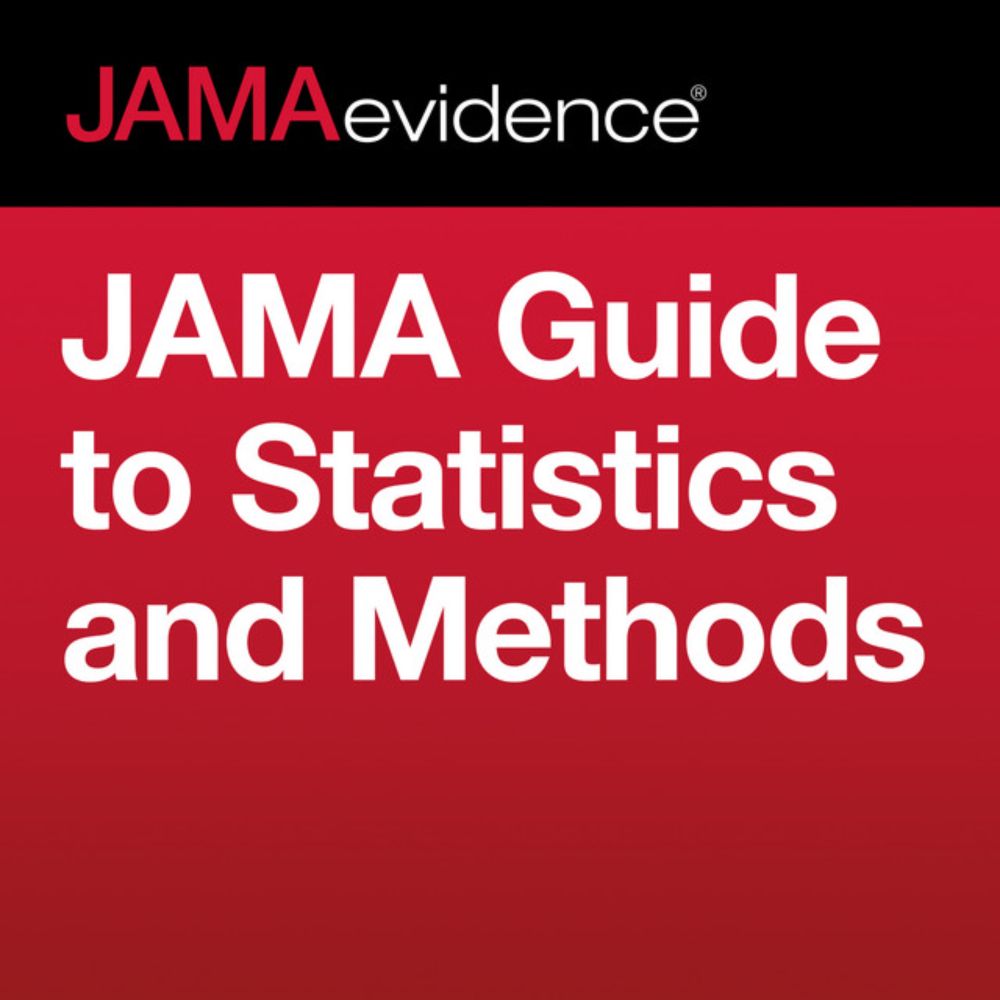When planning for drop outs: If you need n patients and expect some proportion x to drop out, you don't inflate n by 1.x but rather divide by 1-x.
Example: n = 200 and expected 20% drop out
200 * 1.20 = 240 (incorrect, as 80% of 240 = 192)
200 / 0.8 = 250 (correct, as 80% of 250 = 200)
09.06.2025 08:50 — 👍 52 🔁 7 💬 3 📌 3
People can’t hand out randomized envelopes properly and accidentally randomize entire villages instead of people and were supposed to believe in a large randomized study with no other issues
06.06.2025 13:05 — 👍 1 🔁 0 💬 1 📌 0
He was right, and with large language AI models you don’t even need to conduct studies
06.06.2025 13:00 — 👍 1 🔁 0 💬 1 📌 1
In that case, with a large sample size and other biases, you have a narrow interval around the wrong value, making you overconfident in range that could be off to make a practical difference
06.06.2025 12:53 — 👍 2 🔁 0 💬 1 📌 0
Plus, the idea of a very large trial with a precise estimate and no other biases is fairy tale. If people accidentally randomize entire villages or can’t hand out envelopes right, imagine how perfectly they’re conducting all the other protocols of the study
06.06.2025 12:51 — 👍 0 🔁 0 💬 0 📌 0
It’s not a bad article but there are some misunderstanding of how certain procedures work, which makes it frustrating when seeing an authority of EBM creating occasional blanket rules of thumb for what’s desirable
06.06.2025 12:48 — 👍 2 🔁 0 💬 1 📌 0
If you wanna balance prognostic factors so badly, why not measure them beforehand and divide the subjects into two groups to achieve perfect balance and the sought after “no differences between groups”?
06.06.2025 12:42 — 👍 1 🔁 0 💬 2 📌 0
Naturally the only thing to do after seeing this is to suggest that you actually test whether randomization has succeeded via a statistical test for balance, and if it’s not, just rerandomize forever until you achieve perfect balance and the holy p =1
06.06.2025 12:39 — 👍 5 🔁 1 💬 1 📌 0

RIP Edward Leamer. Specification Searches was ahead of its time
02.03.2025 18:51 — 👍 1 🔁 1 💬 0 📌 0
Nice summary of our recent paper on SMOTE w/ @alcarriero.bsky.social @benvancalster.bsky.social
06.03.2025 13:40 — 👍 16 🔁 2 💬 0 📌 1

RIP Edward Leamer. Specification Searches was ahead of its time
02.03.2025 18:51 — 👍 1 🔁 1 💬 0 📌 0

Screenshot of http://jmlr.org/papers/v26/23-1317.html
My work on network regression and mediation in latent space models is now published at JMLR!
jmlr.org/papers/v26/2...
10.02.2025 23:30 — 👍 26 🔁 6 💬 2 📌 0
Statistician. PhD @Harvard • Masters degree in pure math • Follow me for fun, nerdy content.
Sign up to my newsletter: kareemcarr.substack.com
Epidemiologist, writer, bon vivant. Professor @UNC (opinions my own); co-PI of STAR Cohort; "Morpheus of the Table 2 Fallacy.” He/him.
Stanford Professor | Computational Health Economics & Outcomes | Fair Machine Learning | Causality | Statistics | Health Policy | Health Equity
drsherrirose.org
Lab manual: stanfordhpds.github.io/lab_manual
Personal account
https://miguelhernan.org/
Using health data to learn what works.
Making #causalinference less casual.
Director, @causalab.bsky.social
Professor, @hsph.harvard.edu
Methods Editor, Annals of Internal Medicine @annalsofim.bsky.social
Professor of Epidemiology/Global Health. Caring about kindness in academia. @busph Free Associations podcast co-host pophealthex.org/fa
Author: For the a common Good: Philosophical Foundations of Research Ethics (OUP) and K&L Gates Professor of Ethics and Computational Technologies at CMU. Recent papers:
https://arxiv.org/abs/2308.00868
https://doi.org/10.1016/j.xcrm.2022.100622
Biostatistician • Associate Prof @ Wake Forest University • former postdoc @ Hopkins Biostat • PhD @ Vandy Biostat • 🎙 Casual Inference • lucymcgowan.com
Statistician; Professor and Chair @JHUBiostat @JohnsHopkinsSPH, w/links to @SREESociety, @AmericanHealth. Oh, & spouse, mom, runner, traveler.
assoc prof of statistics & data science at Carnegie Mellon
https://www.ehkennedy.com/
interested in causality, machine learning, nonparametrics, public policy, etc
Faculty at UC San Diego. Chief Health AI Officer at UC San Diego Health. #rstats. Creator of Tidier.jl #julialang. #GoBlue. Views own.
Canadian epidemiologist and causal inference person at Erasmus Medical Center. Big fan of Northern Expsoure and Car Talk.
jeremylabrecque.org
Statistician • Professor • University of Oxford • NIHR Senior Investigator • 🚴♂️
TRIPOD+AI: tinyurl.com/2dsb9e75
EQUATOR Network: tinyurl.com/5dw4rcy5
Google scholar: tinyurl.com/ysv3zwek
#prediction #machinelearning #AI #openscience #metascience
Professor of Biostatistics • BMJ Deputy Chief Stats Editor • Books: "Prognosis Research in Healthcare: concepts, methods & impact" & "IPD Meta-Analysis: A Handbook for Healthcare Research.." • Websites: www.ipdma.co.uk & www.prognosisresearch.com • Whovian
Professor of Medical Statistics, University of Bristol, UK: meta-analysis methods, diagnostic test accuracy, Bayesian modelling. Any views my own or my cats’.
Professor, Statistical learning in molecular medicine. Director Oslo Centre for Biostatistics and Epidemiology @ocbe.bsky.social, @uio.no & Oslo University Hospital. Posting in my own capacity. (Bio)statistics, climate breakdown, train journeys.
PhD | Epidemiology, Applied #CausalInference, #PublicHealth, Stroke research, improving quality, peer review, higher ed & research assessment reform
@ Charité in #Berlin
Likes: improving science & improv comedy
#EpiSky #Epidemiology #HigherEd #AcademicSky
Statistician. Associate prof. at NYU Grossman Department of Population Health. Causal inference, machine learning, and semiparametric estimation.
https://idiazst.github.io/website/
Statistician and metascientist. Professor of biometrics at LMU Munich Medical and Mathematical Faculties, committed to open science, member of the Munich Center of Machine Learning. Opinions are mine.
Medical Statistician at KU Leuven. My brain is like a snail but it gets there in the end (or not).
https://linktr.ee/laurewynants


